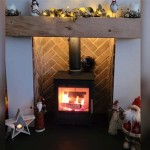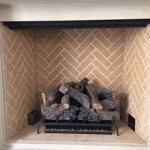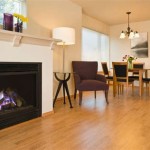How To Fix a Gas Leak Fireplace
A gas leak in a fireplace presents a significant safety hazard, potentially leading to fire, explosion, or carbon monoxide poisoning. Identifying and addressing a gas leak promptly is crucial. This article provides comprehensive guidance on how to detect, troubleshoot, and, when appropriate, fix a gas leak in a fireplace. It also emphasizes when professional assistance is necessary.
Before attempting any troubleshooting or repair, understand the inherent dangers involved. Natural gas and propane are highly flammable, and even a small leak can create a dangerous situation. Prioritize safety above all else. If a strong gas odor is present or if there is any doubt about capabilities, immediately evacuate the premises and contact the local fire department or gas company.
The following steps outline a systematic approach to addressing a potential gas leak in a fireplace. The complexity of the repair often dictates whether it can be safely handled by a homeowner or requires the expertise of a qualified technician.
Identifying a Suspected Gas Leak
The primary indicator of a gas leak is the distinctive odor of rotten eggs or sulfur. Natural gas and propane are naturally odorless, but gas companies add this odorant (mercaptan) to make leaks easily detectable. If this smell is present, take immediate action.
Visual Inspection: Start by visually inspecting the gas line connections leading to the fireplace. Look for any signs of damage, corrosion, or loose fittings. Check the valve connections and the condition of the gas line itself. Note any areas where the line appears bent, cracked, or worn.
Auditory Clues: In some cases, a gas leak can be accompanied by a hissing sound. This sound is caused by the gas escaping from a compromised connection or a damaged section of the gas line. Listen carefully near the gas line, valve, and fireplace pilot light assembly.
The Soap Bubble Test: This is a common and effective method for pinpointing the location of a gas leak. Mix a solution of dish soap and water (approximately 1:1 ratio). Apply the solution liberally to all gas line connections, including fittings, valves, and any suspect areas. If a leak is present, bubbles will form at the point where the gas is escaping. This test should be conducted methodically and thoroughly.
Carbon Monoxide Detector: While not a direct indicator of a gas leak, a malfunctioning fireplace can produce carbon monoxide, a colorless and odorless gas. Ensure a working carbon monoxide detector is installed near the fireplace and in other areas of the home, as recommended by safety guidelines. If the alarm sounds, evacuate the premises and contact the fire department.
Troubleshooting Common Causes of Gas Leaks
Once a gas leak is suspected and the general location has been identified, it is necessary to troubleshoot the specific cause. Several factors can contribute to gas leaks in fireplaces. Understanding these factors helps in determining the appropriate course of action.
Loose Fittings: Loose connections are a common cause of gas leaks. Over time, vibrations or thermal expansion and contraction can cause fittings to loosen. Using a wrench, gently tighten any loose fittings. Be careful not to overtighten, as this can damage the fittings or the gas line itself. After tightening, reapply the soap bubble test to verify that the leak has been resolved.
Corroded Gas Lines: Corrosion can weaken gas lines, leading to leaks. Examine the gas line for signs of rust, pitting, or other forms of corrosion. If corrosion is present, the gas line will likely need to be replaced by a qualified professional. Attempting to repair a corroded gas line is generally not advisable due to the risk of further damage and potential explosions.
Damaged Valves: The gas valve controls the flow of gas to the fireplace. If the valve is damaged or worn, it can leak. Inspect the valve for cracks, leaks, or other signs of damage. In some cases, the valve may be repairable, but often replacement is the best option. Replacing a gas valve requires shutting off the gas supply to the fireplace and disconnecting the gas line, tasks best left to a qualified technician.
Pilot Light Issues: The pilot light assembly can also be a source of gas leaks. Check the pilot light tube for any cracks or damage. If the pilot light is not burning properly, it can indicate a problem with the gas supply or the pilot light assembly itself. A dirty or clogged pilot light orifice can also cause issues. Cleaning the orifice may resolve the problem, but if the pilot light assembly is damaged, it will need to be replaced.
Flexible Gas Line Problems: Many fireplaces use flexible gas lines to connect the main gas supply to the appliance. These lines can be prone to punctures, kinks, or damage from rodents. Carefully inspect the flexible gas line for any signs of damage. If damage is found, the flexible gas line must be replaced immediately by a qualified professional.
Incorrect Gas Pressure: Improper gas pressure can also contribute to leaks or inefficient burning. Gas pressure should be checked by a qualified technician with specialized equipment. Attempting to adjust gas pressure without proper training and equipment can be extremely dangerous.
Repairing Minor Gas Leaks (With Extreme Caution)
Tightening Fittings: As mentioned earlier, tightening loose fittings is a common and relatively simple repair. However, it is crucial to exercise extreme caution. Use the correct size wrench to avoid damaging the fitting. Apply gentle pressure and avoid overtightening. After tightening, always reapply the soap bubble test to confirm the leak has been resolved.
Replacing the Gas Line Connector: Sometimes the connector fittings are corroded and beyond repair. Replacing just the connectors can be a faster and more cost-effective fix than replacing the entire gas line. Take careful measurements before removing the old connector to ensure the new connector is the correct size. Apply pipe joint compound (gas-rated) to the threads of the new connector before installing. Perform the soap bubble test after installation.
Cleaning the Pilot Light Orifice: If the pilot light is not burning properly, the orifice may be clogged. Turn off the gas supply to the fireplace. Use a small wire or needle to carefully clean the orifice. Be extremely gentle to avoid damaging the orifice. Reassemble the pilot light assembly and turn the gas supply back on. Attempt to relight the pilot light. If the pilot light still does not burn properly, the orifice may be damaged or the pilot light assembly may need to be replaced.
Using Gas Leak Detector Sealant: In some cases, specialized gas leak detector sealant can be used to temporarily seal a small leak in a fitting. This is a temporary fix and the fitting should be replaced by a certified professional as soon as possible. Follow the instructions on the sealant carefully and apply it only to the affected area. After applying the sealant, reapply the soap bubble test to confirm the leak has been sealed.
Valve Lubrication (If Applicable): Some gas valves can become stiff or difficult to turn over time, which might lead to a perception of a leak if the valve is not fully closed. Check the manufacturer's documentation for the specific type of lubricant recommended for the valve. Apply the lubricant sparingly and work the valve back and forth to distribute it evenly. If the valve remains stiff or leaks persist, it should be replaced by a qualified professional.
When to Call a Professional
The following situations necessitate professional assistance. Attempting to repair these issues without proper training and equipment can be extremely dangerous.
Significant Gas Leaks: If the gas leak is large or the source is difficult to pinpoint, immediately evacuate the premises and contact the fire department or gas company. Do not attempt to repair the leak yourself.
Corroded Gas Lines: Replacing corroded gas lines requires specialized tools and knowledge. Attempting to repair or replace a corroded gas line could result in further damage and potential explosions.
Damaged Valves: Replacing a gas valve involves disconnecting and reconnecting gas lines. This task should only be performed by a qualified technician. Incorrect installation can lead to gas leaks and dangerous situations.
Suspected Internal Fireplace Issues: Any suspected problems related to the internal components of the fireplace, such as the burner or gas control system, require professional diagnosis and repair.
Uncertainty or Lack of Experience: If there is any doubt about capabilities or if comfortable performing the repairs, contacting a qualified technician is always the safest option.
After any DIY repair: Have a professional inspect fireplace and gas line, even if the leak seems resolved.
Ultimately, safety must be the top priority when dealing with gas leaks. By following these guidelines and exercising caution, individuals can effectively address minor gas leaks in fireplaces. However, when faced with complex or uncertain situations, seeking professional assistance is crucial to ensure the safety of the home and its occupants. Remember the signs: smell, sight, sound. React responsibly and swiftly.

Fireplace Gas Valve Leaking Here S How To Test It

How To Check For A Gas Leak In Fireplace

Fireplace Gas Valve Leaking Here S How To Test It

Reasons Your Gas Fireplace Isn T Working Experts

Fireplace Gas Valve Leaking Here S How To Test It

How To Fix Chimney Leaks Full Service

Common Gas Fireplace Problems And Repair With S

Common Gas Fireplace Problems And Repair With S

Gas Line Installation Leak Repair Reliable Services

5 Surprising Reasons Your Gas Fireplace Won T Turn On
Related Posts








